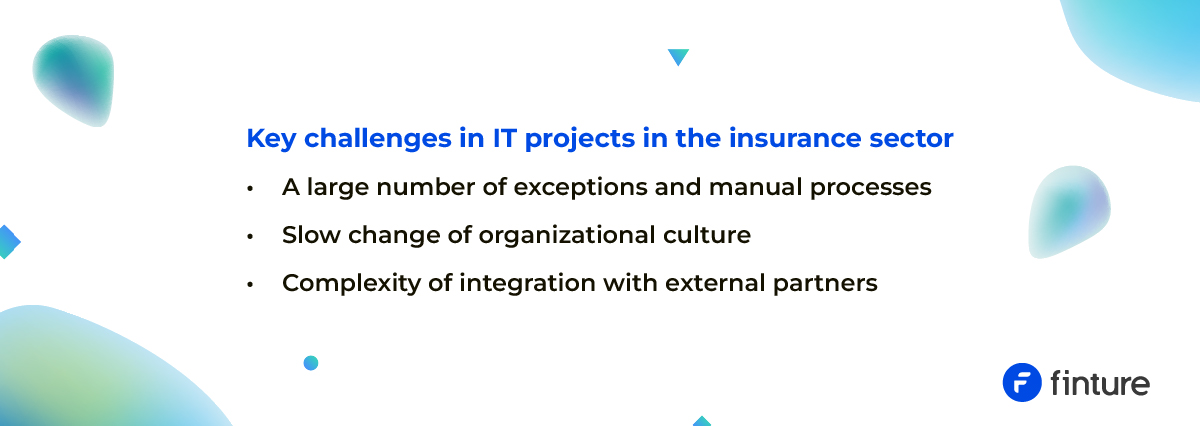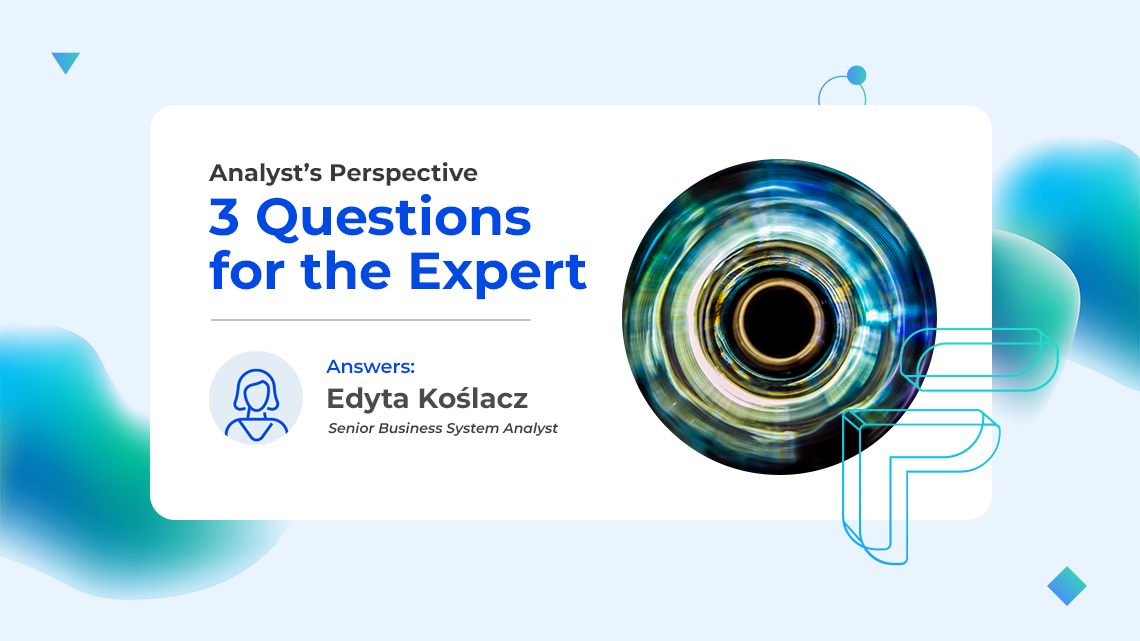Analyst’s Perspective
3 Questions for the Expert. Edyta Koślacz
Collaboration with clients in IT projects can be surprising in many ways – especially when seen through the eyes of an experienced business-system analyst. Edyta Koślacz, who has been involved for years in business optimization projects in the insurance industry, shares her insights from the front line of working with business stakeholders: both the positive aspects and the areas that still await improvements.
In our conversation, Edyta reveals the behind-the-scenes of an analyst’s daily work. She talks about the surprising openness of clients to change, their deep knowledge of processes, and their engagement in testing and implementation. She also points out what could further improve the outcomes of joint efforts. Additionally, she shares which areas of the insurance industry are the most demanding from the perspective of analysis and introducing new solutions.

What are 3 things that have positively surprised you in working with clients on IT projects from your perspective as an analyst?
- Openness to change. Contrary to stereotypes, many clients are genuinely open to business optimization, often have good intuition, and want to introduce improvements. Of course, not everyone, but it seems increasingly common.
- Knowledge of operational details. Subject matter experts know their processes inside out, which is invaluable when designing exceptions, rules, and edge cases.
- Engagement in testing and implementation. Business clients often actively participated in UAT testing, reported fixes, and treated the product as something of their own.
What are 3 things clients in IT projects could do better?
- Lepsze przygotowanie do warsztatów. Zbyt często zdarza się, że interesariusze przychodzą bez wcześniejszego przemyślenia swoich wymagań. Z tego powodu spotkanie zamienia się w burzę pomysłów zamiast być konstruktywną pracą nad rozwiązaniami.
- Avoiding decisions by postponing them.Sometimes business avoids making decisions with the excuse that “it still needs to be agreed upon,” causing the project to lose momentum.
- Understanding the impact of requirements on system complexity. Some requirements may seem simple, but in practice they complicate rules or entire processes, and clients do not always consider, “is it worth implementing this?”
What is the most difficult aspect of working on IT projects in insurance?
- Large number of exceptions and manual processes. In claims handling, there are countless edge cases, with each type of damage having different rules, values, and documents, making standardization difficult.
- Slow change of organizational culture. Operational departments often work for years according to their own established standards, and the mindset sometimes remains “paper-based.” This slows down the introduction of business optimizations, changes, and improvements.
- Complexity of integration with external partners. Each entity has its own procedures, work methods, and documentation quality, which affects the entire process of analysis and implementation of the client’s IT project.

